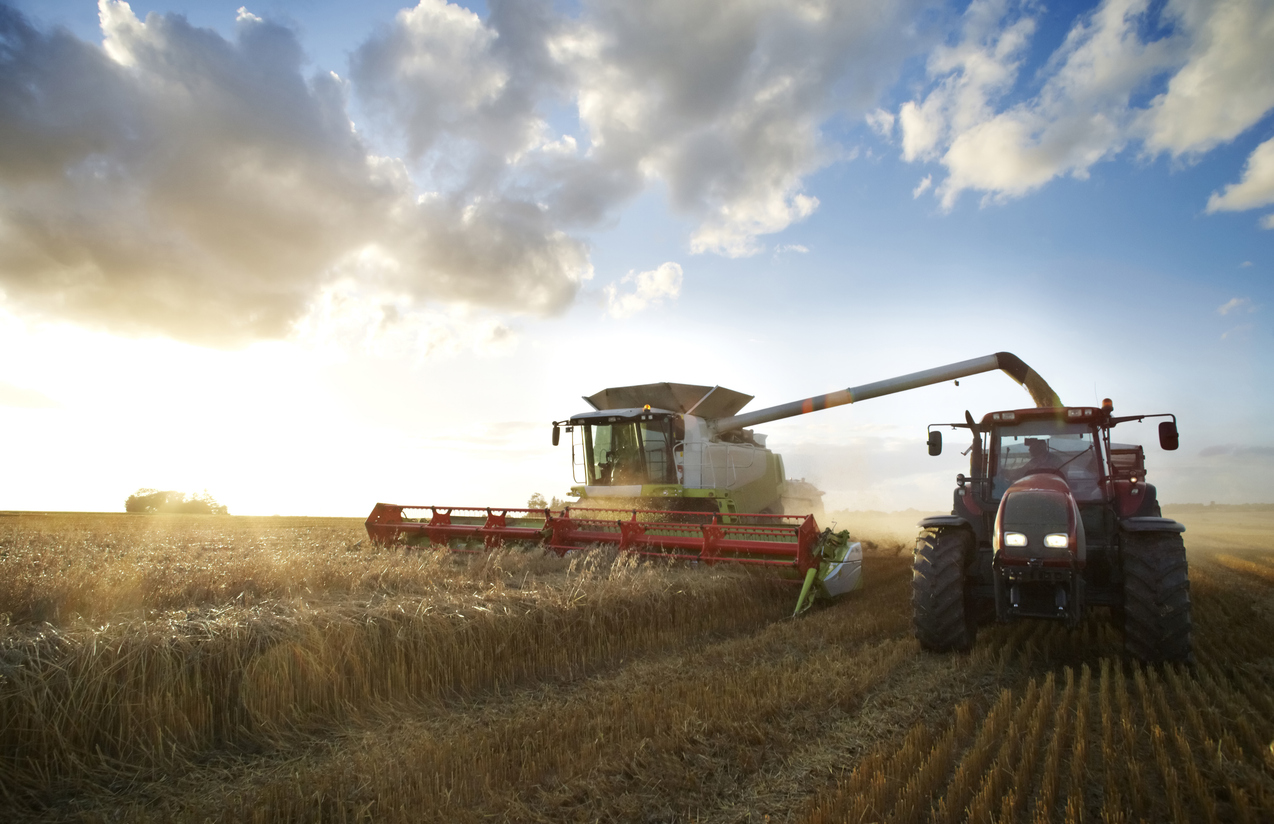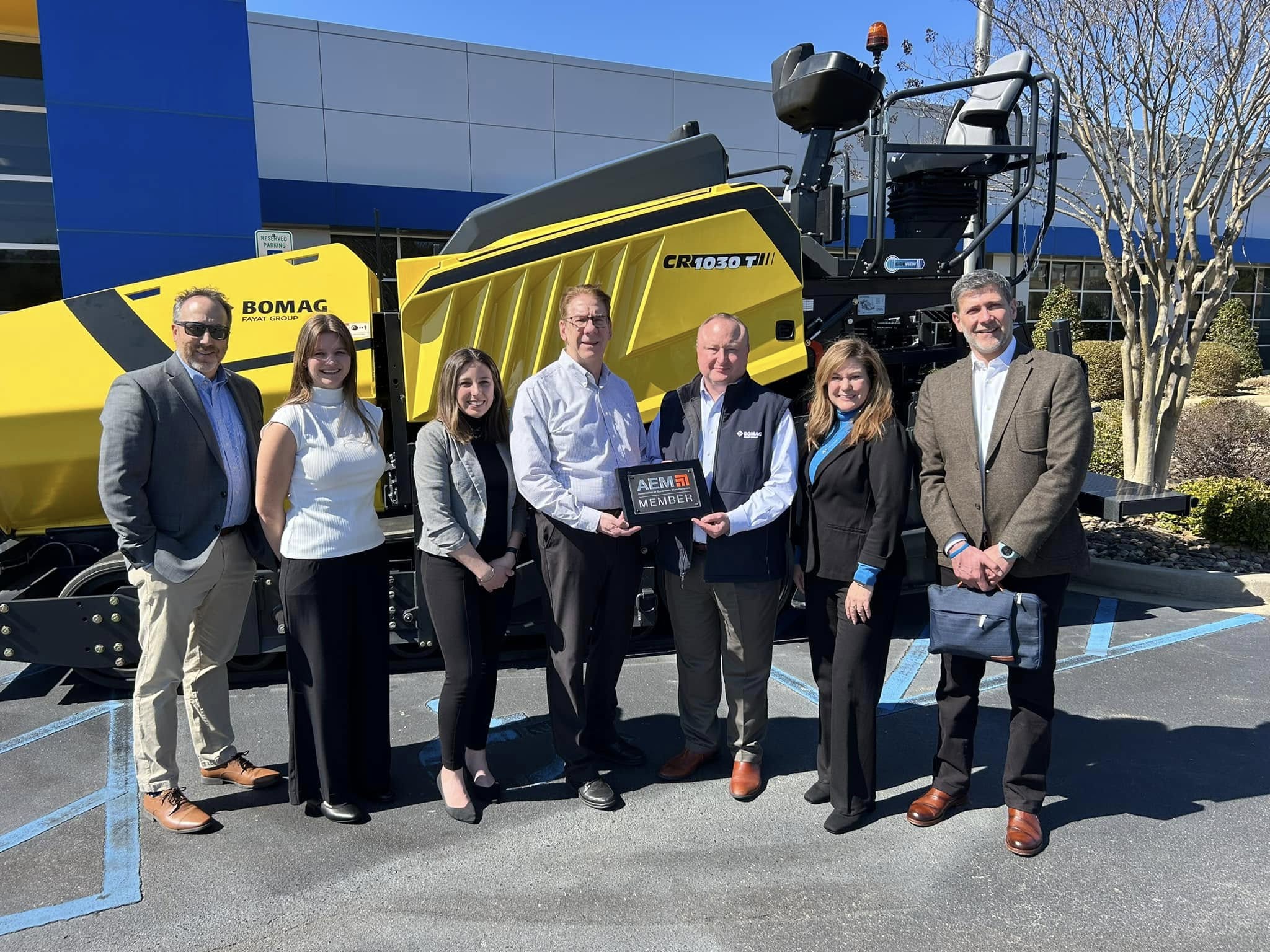In celebrating National Agriculture Week and National Ag Day, AEM recognizes the importance of agriculture and the role it plays in our society. What’s more, we applaud the role of farmers in helping our members develop the equipment making it possible for food to get from the fields to our tables. Learn more.
Agriculture and environmental sustainability have been closely linked for many years. It’s just that there has been little data to quantify the benefits.
That, however, is no longer the case.
“After doing some research, we realized there was a truckload of good information about the economic benefits of precision agriculture, but very little information about the environmental benefits,” said AEM Senior Vice President Curt Blades. “So AEM partnered awhile back with several other organizations (the American Soybean Association, CropLife America, and National Corn Growers Association) to take a look at this.”
AEM’s 2021 study, The Environmental Benefits of Precision Agriculture, examines the impact of various technologies on the production of row crops, broad acre crops, roots, and tubers, as well as forage. The data overwhelmingly shows that precision agriculture can have a positive environmental impact in all of these areas.
What is precision agriculture?
Precision agriculture leverages technologies to enhance sustainability through more efficient use of land, water, fuel, fertilizer, and pesticides. Essentially, farmers who use precision agriculture technologies use less to grow more, reducing both cost and environmental impact.
The five primary areas of technology are:
- Auto guidance, also known as auto steer, uses GPS to automatically steer machinery and avoid overlap during tilling, planting, spraying, and harvesting. This more efficient operation reduces the time, labor, fuel, and materials used.
- Machine section control turns planter, sprayer, and fertilizer sections on/off in crop rows that have been previously treated. This helps to optimize material application, reducing cost and environmental impact.
- Variable rate technology uses sensors or preprogrammed maps to determine the application rates for fertilizer, seed, and crop protection products. This equipment may also utilize supporting technologies such as GPS, yield monitors, and crop and soil sensors.
- Machine and fleet analytics encompass the real-time monitoring of equipment, including location tracking, route suggestions, and idling. This technology helps to increase asset utilization and decrease the amount of fuel used.
- Precision irrigation provides the ability to apply different amounts of water to different areas. By applying just the right amount of water as needed, water consumption is reduced without negatively impacting crop performance.
“There is also a lot of enabling technology that goes along with the five key areas listed above,” Blades pointed out. “Things like remote sensing, GPS tracking, climate stations, integration with field prescriptions, and on-the-go sensing all enable impact technologies like auto guidance and machine section control to take hold.”
“After doing some research, we realized there was a truckload of good information about the economic benefits of precision agriculture, but very little information about the environmental benefits. So AEM partnered awhile back with several other organizations to take a look at this." -- AEM Senior Vice President Curt Blades
What does the data say?
In consultation with several environmental groups, AEM identified five areas with the most potential to impact the environment. The 2021 study shows that farmers consistently using various precision agriculture technologies achieved the following:
- 4% increase in crop production
- 7% increase in fertilizer placement efficiency
- 9% reduction in herbicide and pesticide use
- 6% reduction in fossil fuel use
- 4% reduction in water use
How do all of those improvements add up from an environmental standpoint?
- 2 million acres of cropland avoided due to more efficient use of existing land
- 30 million fewer pounds of herbicide
- 100 million fewer gallons of fossil fuel
- Enough water saved to fill 750,000 Olympic-size swimming pools
While the AEM study shows significant gains in each area, the potential for additional improvement is even more impressive.
“The 4% productivity gain discussed in our study is based on today’s adoption levels,” Blades pointed out. “We have estimated that there is an additional 6% productivity gain to be achieved with full adoption of precision agriculture.”
“Now we can show the world that American commodities are grown sustainably, and precision agriculture is a big part of that. The great thing about these technologies is that no matter what kind of farmer you are, precision agriculture technologies have substantial value.” -- AEM Senior Director of Regulatory Affairs and Ag Policy Nick Tindall
With respect to fertilizer use, an additional efficiency gain of 14% is possible through broader adoption. “More efficient fertilizer use comes down to the four R principles: the right time at the right rate with the right source in the right place,” Blades explained. “Precision agriculture is absolutely necessary for all four of those principles to take place.”
With respect to herbicide and pesticide use, the 9% gain already realized could be followed by another 15% gain through full adoption. That means another 48 million pounds of product could be avoided.
“These are amazing statistics to share,” Blades said. “The crop protection industry has a lot of arrows on its back. We want to reduce the amount of product that’s on the ground. If farmers can employ technologies like auto guidance, variable rate technology and section control, it’s pretty amazing what is possible in terms of usage reduction.”
The potential for additional gains in water savings is perhaps the most impressive. Full adoption of technologies like variable rate precision irrigation and soil moisture sensors could result in another 21% reduction in water usage.
With fossil fuel usage, a number of things come into play. “Engine technology has come a long way,” Blades said. “But the big drivers in agriculture are auto guidance and machine telematics.” By leverage those two technologies, the industry could achieve another 16% reduction through full adoption.
Along with a reduction in fossil fuel usage is a discussion about CO2 emissions. Precision agriculture technologies are making an impact here as well.
“In all the data we have seen thus far, current adoption equates to roughly 10.1 million metric tons avoided,” Blades said. “Another 17.3 million metric tons could be avoided through broader adoption of precision agriculture. This takes into consideration the more efficient use of land, herbicide reduction, fertilizer efficiency, water usage, and fossil fuels from machinery. All of these things come together to tell a really great story.”
The story could get even greater with more widespread adoption of precision agriculture technologies.
“Everyone was very receptive of the data we’re bringing out. There’s almost a thirst for these kinds of numbers as justification for a modern way of producing food. We’re not saying every farmer across the U.S. will implement all of these technologies. But if we can edge closer to 95%, we’ll make a big difference.” -- AEM Director of Agriculture Austin Gellings
What will it take to increase adoption?
According to Blades, four key components will help accelerate adoption:
- Government policies that reward innovation
- Increased farm income to help facilitate investments
- Improved infrastructure (i.e., wireless networks over cropland)
- Improved consumer communication to build trust in the science
“Technology isn’t something we should be afraid of,” Blades said. “Technology is something we should fully embrace to meet the challenges that are in front of us.”
It should also be noted that embracing precision agriculture can also create additional economic opportunity for farmers. Nick Tindall, AEM senior director of regulatory affairs and ag policy, said significant outreach to organizations like the EPA, USDA and NRCS has been made as a result of this study.
“Now we can show the world that American commodities are grown sustainably, and precision agriculture is a big part of that,” Tindall said. “The great thing about these technologies is that no matter what kind of farmer you are, precision agriculture technologies have substantial value.”
Austin Gellings, AEM's director of agriculture, has presented the study’s findings to various stakeholder groups around the country. One such group was a gathering of state directors of agriculture.
“Everyone was very receptive of the data we’re bringing out,” Gellings stated. “There’s almost a thirst for these kinds of numbers as justification for a modern way of producing food. We’re not saying every farmer across the U.S. will implement all of these technologies. But if we can edge closer to 95%, we’ll make a big difference.”
Gellings also presented the study’s findings to a gathering of farmers.
“They really appreciated this information, too,” Gellings said. “For those already using precision agriculture, these numbers validate what they are doing. Also, if they have a neighbor who is on the fence or skeptical about some of these technologies, they can point to these numbers as proof. Not only can you make a difference in the world, but you’ll also benefit from reducing herbicide application, for instance. That’s dollars and cents, and a farmer’s eyes light up every time.”
Learn More
AEM, in partnership with the American Soybean Association, CropLife America, and National Corn Growers Association, released a study quantifying how widely available precision agriculture technology improves environmental stewardship while providing economic return for farmers. Precision agriculture leverages technologies to enhance sustainability through more efficient use of critical inputs, such as land, water, fuel, fertilizer, and pesticides. Farmers who use precision agriculture equipment use less to grow more. The Environmental Benefits of Precision Agriculture study highlights how policies and technological advancements can help farmers increase these outcomes.
For more perspectives from AEM staff, subscribe to the AEM Industry Advisor.





